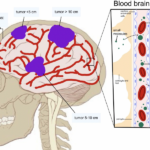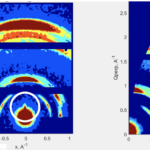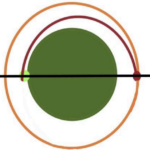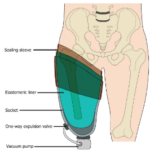This program targeted first-generation engineering students interested in pursuing undergraduate research opportunities. The program is designed to bookend the research experience with a lecture series at the start and end with attending Research Week on campus. The lecture series is composed of 8 mini-lectures about how to form a research question, create effective search strings, etc. all aimed at providing students with the skills to springboard them into the research experience.
 Thermal ablation techniques for glioblastoma, Thy Doan, Mentor: Dr. Adrian Rodriguez
Thermal ablation techniques for glioblastoma, Thy Doan, Mentor: Dr. Adrian Rodriguez
Brain tumors remain one of the deadliest cancers that are highly resistant to most treatments. Among these tumors are malignant gliomas, which are known for their self-renewing stem-like cells and spreadability. The lack of effective treatments create the need for new approaches that can penetrate the blood brain barrier and target highly resistant tumors. Current treatments, such as chemotherapy are only effective to an extent and must be combined with other techniques to reach its full potential. Combinations of non-thermal techniques with thermal ablation can prove to target resistant gliomas and move past the blood brain barrier, creating a surplus of solutions for cancerous tumors. Among these thermal-ablation techniques is radiofrequency ablation (RFA), which uses heat induced by radiofrequency to kill cancer cells and eventually the tumor itself. The present work explores RFA’s technique, its advantages, disadvantages, and uses to outline a theoretical framework for treating malignant gliomas.
Link to full paper.
 PDIs and X-ray diffraction methods, Kendra Hernandez, Mentor: Dr. Michael Cullinan
PDIs and X-ray diffraction methods, Kendra Hernandez, Mentor: Dr. Michael Cullinan
The challenge for PDIs revolves around understanding crystalline structure, molecular orientation, and maximizing singlet fission. This is addressed using X-ray diffraction (XRD). A PDI experiment was conducted with the goal of identifying the molecular orientation of PDIs on various substrates. The methods used included: (i) obtaining thin films, annealed C1-PDI on quartz surfaces, and (ii) testing films with SAXSLab Ganesha in GIWAXS setting to identify crystalline structure orientation on substrate.
Link to presentation slides.
 Identifying airborne sources of methane emissions in underground coal mines, Leonela Hernandez, Mentor: Dr. Lea Hildebrandt
Identifying airborne sources of methane emissions in underground coal mines, Leonela Hernandez, Mentor: Dr. Lea Hildebrandt
This project identified and analyzed active/abandoned underground coal mines and coal vents in high coal mine emission areas in the Marcellus shale region. Total methane emissions have increased 161.9% in last 250 years. Underground coal mines make up 8% of total methane emissions. Monongalia and Emerald coal mines now use natural gas pipelines. Cumberland coal mine still actively producing while simultaneously using natural gas production to recover and use coal mine methane.
Link to presentation slides.
Using VR technology to enhance the control of a virtual humanoid robot, Noel Hernandez, Mentor: Mr. Ryan Gupta
Preliminary work was performed for this project. An inverse kinematic solver was created in Unity XR. The future work is to use a virtual robot alongside ROS to control a robot with the information from the VR inverse kinematics.
 Orbital debris risk mitigation, Marco Obregon, Mentor: Dr. Lori Magruder
Orbital debris risk mitigation, Marco Obregon, Mentor: Dr. Lori Magruder
Collisions happen due to the varying types of debris that are the results of explosions, abandoned material, other collisions, or other scraps that have no further use. This results in a combination of fluids such as antifreeze, fuel, paint scraps, metallic parts, and other general junk. This work is a discrete approach to offer a potential change in how launches of satellites, rockets, and other projectiles are thought about prior to their launch stage. The results of this work attempts to add an extra constraint that companies, space programs, and researchers should consider to reduce the odds of collisions with orbital residue that is present in space.
Link to full paper.
 Reviewing thermal properties of transtibial and transfemoral socket liners, Alex Weideman, Mentor: Dr. Shelby Walford
Reviewing thermal properties of transtibial and transfemoral socket liners, Alex Weideman, Mentor: Dr. Shelby Walford
About 53% of amputees experience prosthetic-related heat discomfort. The common causes of amputation include physical trauma (veterans, vehicle accidents, natural disasters), vascular-disease (peripheral artery disease, venous insufficiency), burn injury, and electro-amputation. This project surveyed the literature on thermal management technologies and material selection for socket liners. In future work, greater attention must be targeted toward discovering the clinical impacts of phase-changing materials and awareness of commercial liners in order to address the unique physiology and goals of different patients.
Link to presentation slides.
